Are you passionate about preserving history and culture? Museums play a vital role in our communities, providing a window into our past and inspiring future generations. As we strive to create captivating exhibits that educate and engage, we are reaching out for your support to help bring these visions to life. Join us in making a differenceâread on to learn how you can contribute!
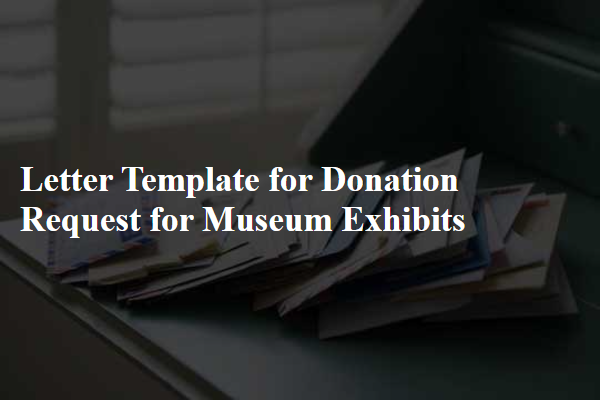
Clear Purpose Statement
The museum exhibit dedicated to preserving and showcasing ancient artifacts, particularly those from the Roman Empire, aims to provide educational experiences for visitors of all ages. Generating funds through targeted donations will ensure the acquisition of authentic relics, such as pottery, coins, and tools, which are essential for authentic representation. Additionally, contributions will support the development of interactive displays and guided tours, enriching visitor understanding of historical contexts. Collaborations with local schools and community organizations will foster a deeper appreciation for history, while outreach programs will engage underrepresented groups, promoting accessibility to cultural education.
Potential Donor Benefits
Supporting museum exhibits through donations can significantly enhance community cultural engagement. Museums such as the Smithsonian, located in Washington, D.C., offer potential donors various benefits. Recognition in exhibit materials, including plaques and brochures, can heighten visibility among visitors, with millions touring annually. Exclusive invitations to donor appreciation events foster connections with other philanthropists, cultural leaders, and curators. Access to exclusive previews of upcoming exhibits allows donors to engage with art and history before public release, demonstrating donor impact firsthand. Tax-deductible contributions enhance personal philanthropy profiles while supporting education and preservation of local heritage, promoting social responsibility within communities.
Emotional Appeal
Museums, significant cultural institutions, often rely on generous donations to support their exhibits that educate and inspire visitors. Each year, numerous families visit the National Museum of Natural History in Washington D.C., where captivating displays bring the wonders of the natural world to life. Funds raised through donations contribute to preserving unique artifacts, such as the legendary Hope Diamond or ancient fossils over 750 million years old, which tell incredible stories of our planet's history. Contributions also help fund educational programs that reach over 50,000 schoolchildren annually, fostering a love for science and history. Personal stories from visitors highlight the profound impact these exhibits have on their understanding of the universe, reinforcing the critical need for community support in maintaining these cultural treasures for future generations.
Specific Donation Impact
Museums like the Smithsonian Institution and the British Museum rely heavily on donations to bring historical and cultural exhibits to life. A donation of $500 can directly fund the acquisition of rare artifacts, enhancing public understanding of history through tangible displays. Donations ranging from $1,000 to $5,000 can underwrite special exhibit design, including interactive elements like augmented reality experiences that engage visitors in a unique way. Support at higher levels, such as $10,000, can help conserve and restore fragile items, ensuring they remain on display for future generations to appreciate. Specific contributions can make a notable impact by attracting more visitors to the museum, fostering community engagement, and enriching educational programs offered through workshops and guided tours focused on the rich narratives behind each artifact.
Call to Action
Museums play a vital role in preserving and showcasing cultural heritage, history, and art. The significant classes of financial contributions can greatly enhance the exhibits at institutions like the Smithsonian National Museum of Natural History in Washington, D.C. Donations not only facilitate the acquisition of rare artifacts, such as ancient Egyptian mummies or Native American pottery, but also support educational programs and community outreach initiatives. Generous support allows for the creation of immersive experiences, like augmented reality tours or interactive displays, which bring history to life for visitors of all ages. Engaging public donors and local businesses can foster a sense of community, encouraging collaboration on events that celebrate local history and arts. Every contribution, no matter the size, enhances the journey of discovery and learning.
Letter Template For Donation Request For Museum Exhibits Samples
Letter template of donation request for artifact preservation at the museum
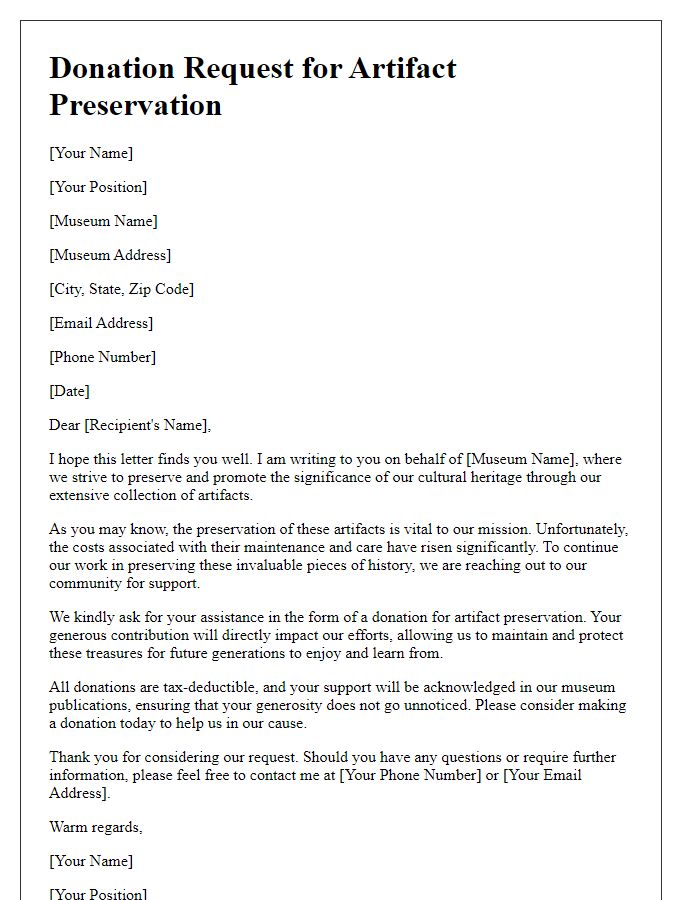
Letter template of donation request for community engagement in museum exhibits
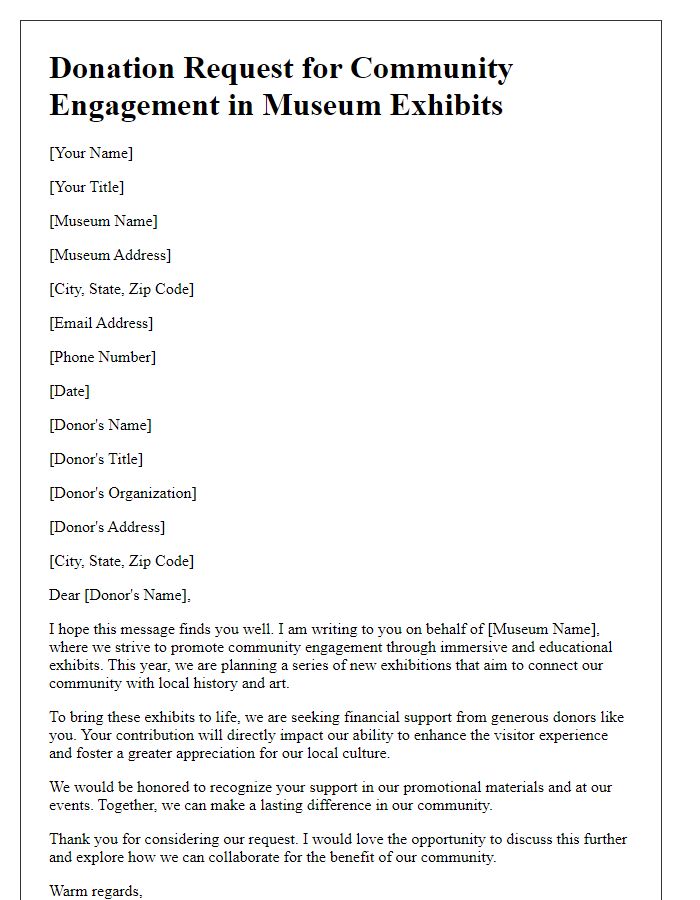
Letter template of donation request for special exhibit sponsorship at the museum
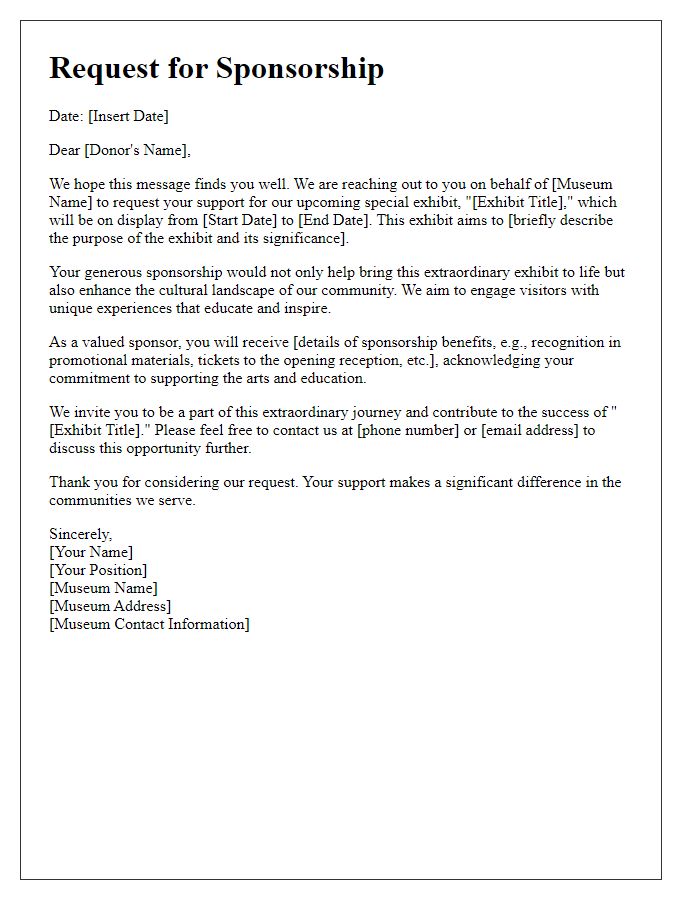
Letter template of donation request for technological upgrades in museum exhibits
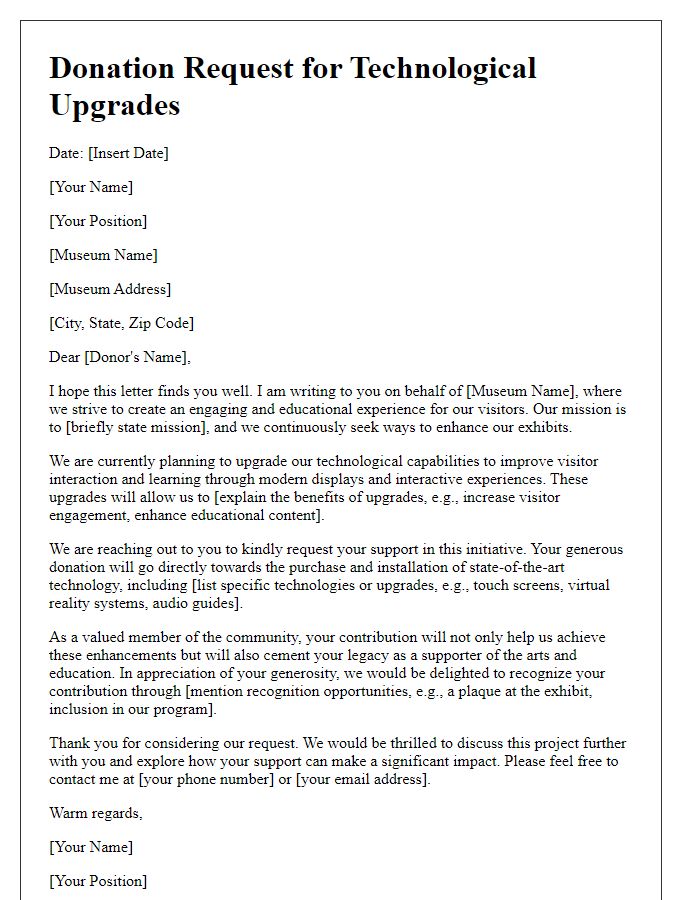
Letter template of donation request for cultural heritage museum initiatives
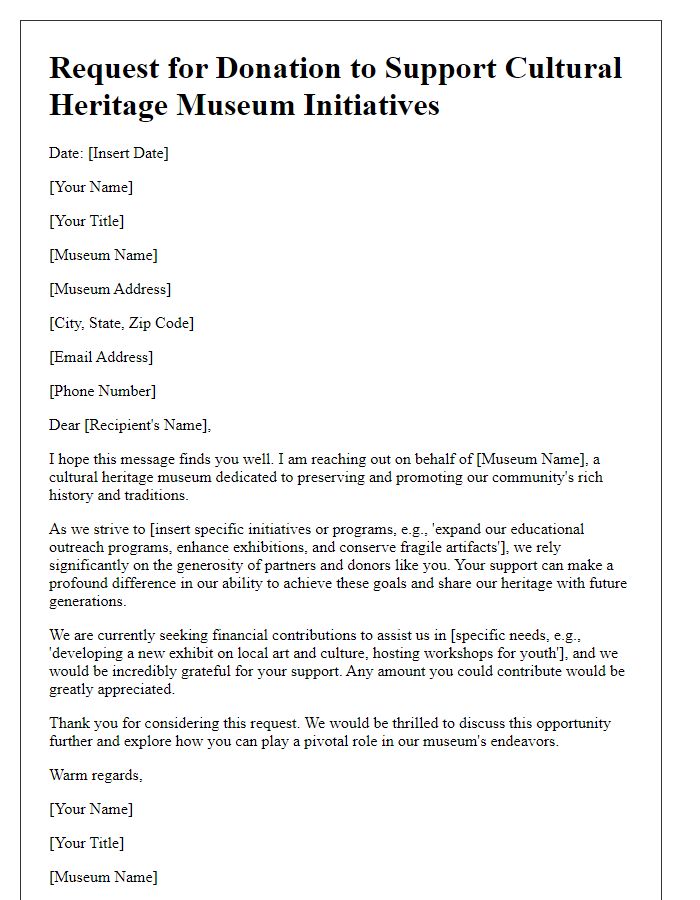
Letter template of donation request for temporary exhibit funding at the museum
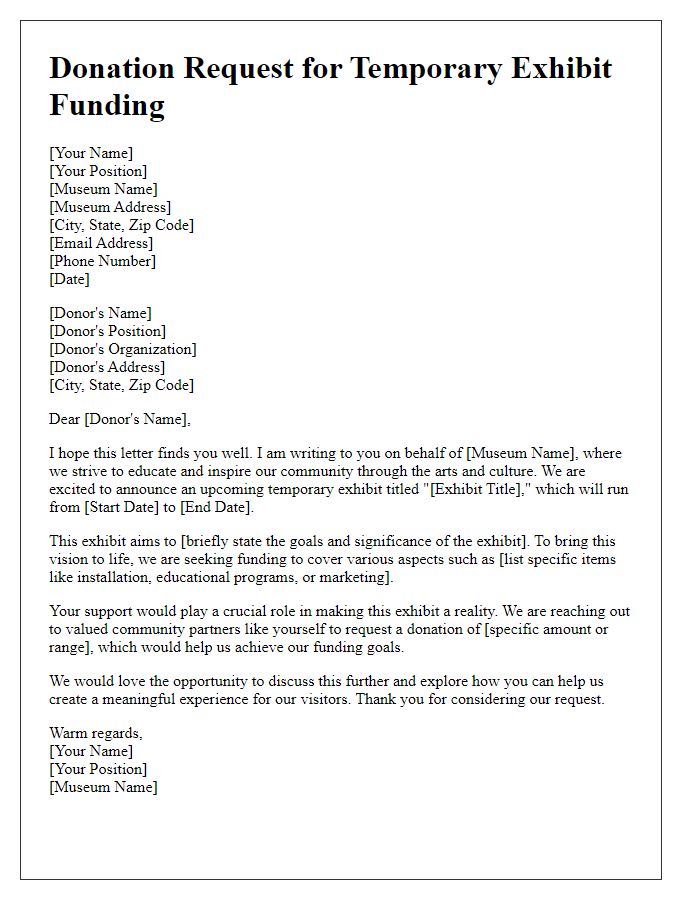

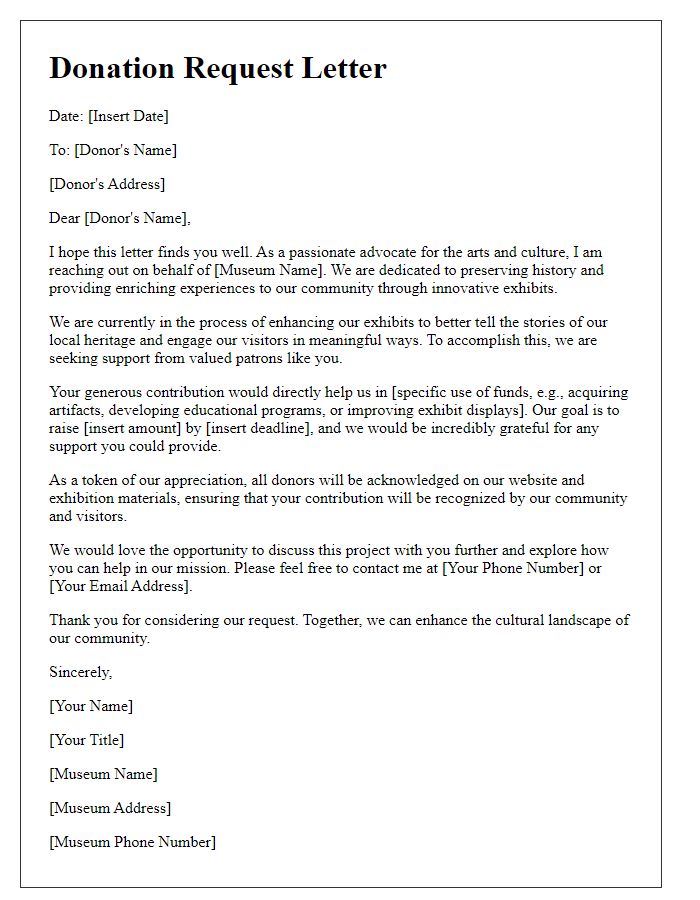
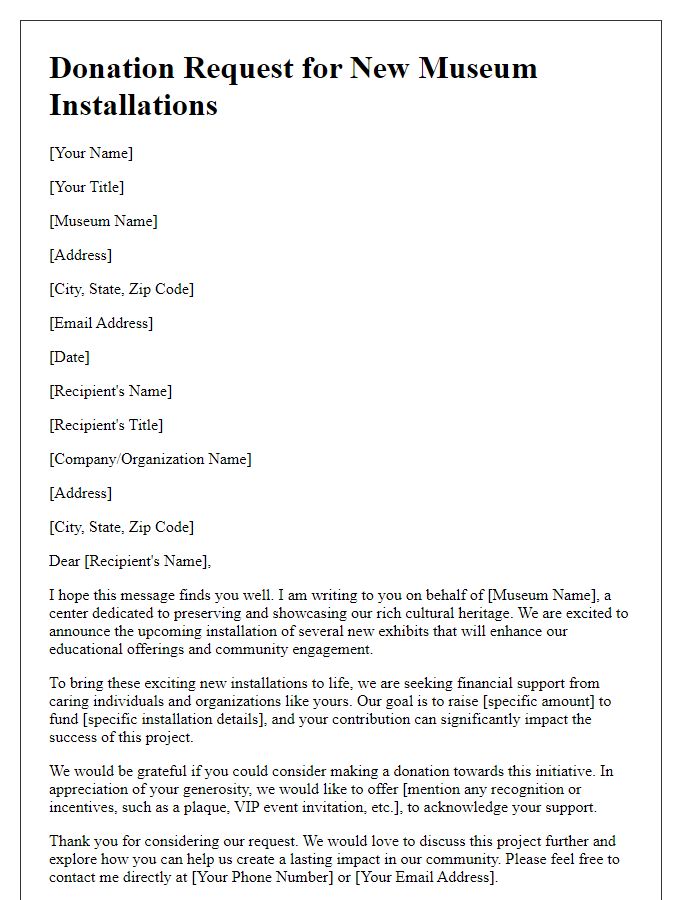
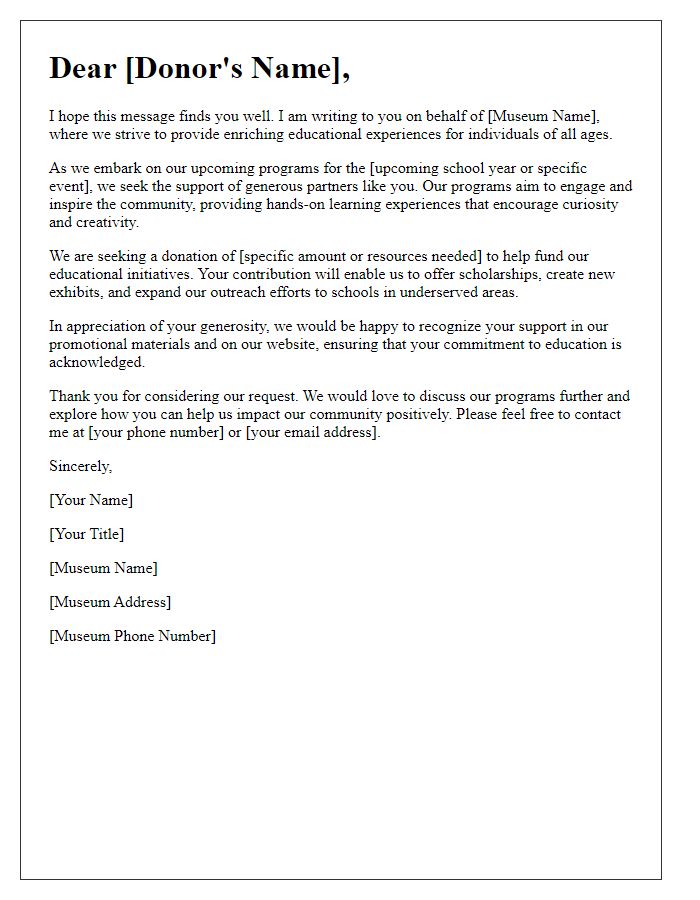
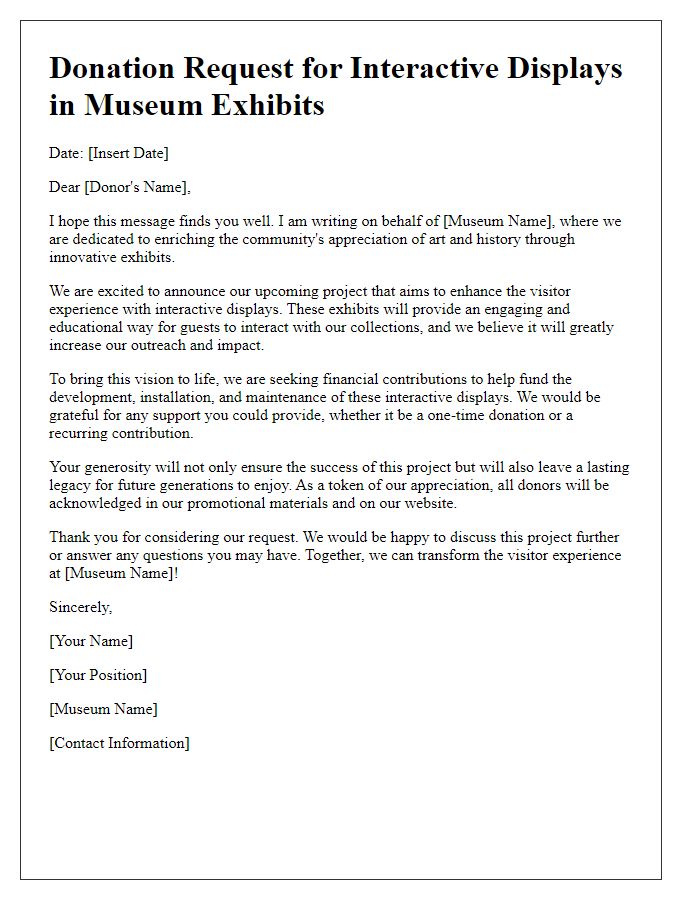

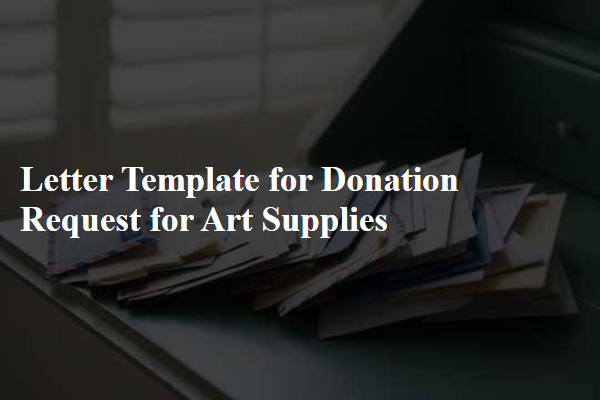
Comments